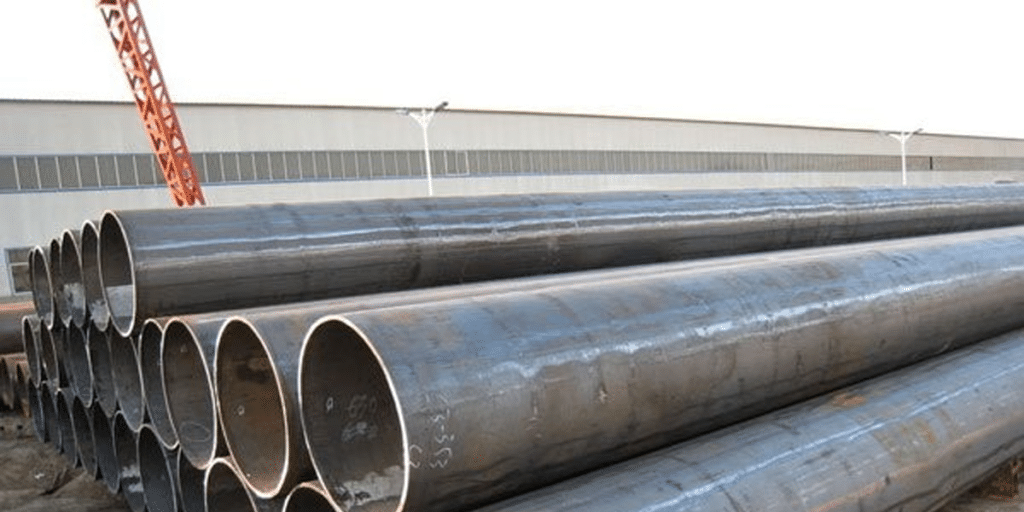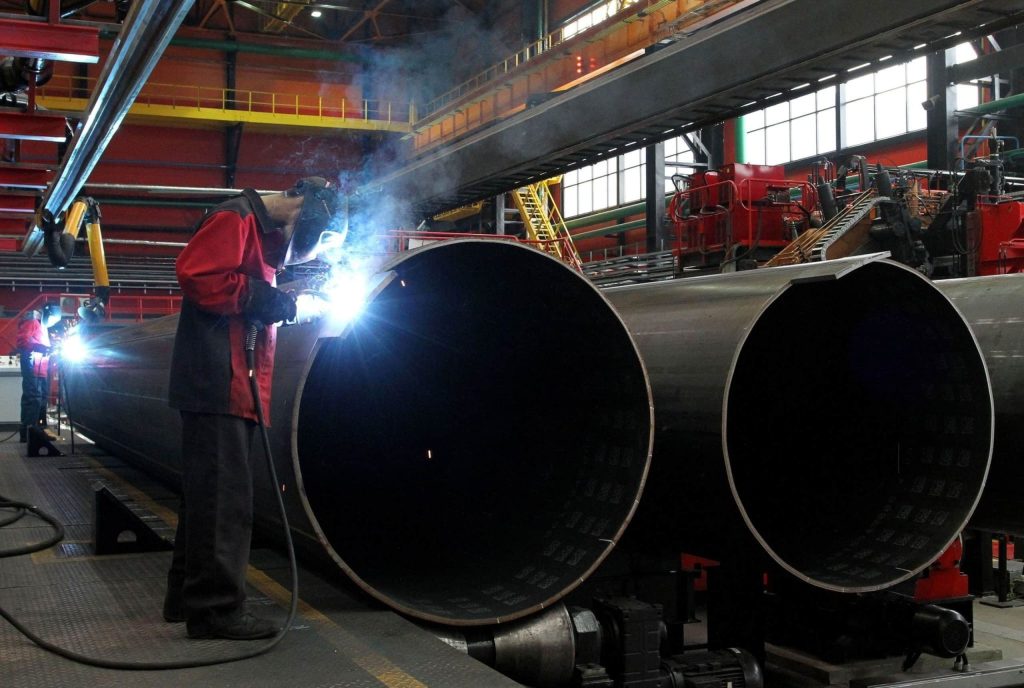- 1. Overview of ASTM A53 Grade B — A Versatile Pipeline Standard
- 2. Overview of ASTM A500 — Designed for Structural Applications
- 3. ASTM A53 Grade B vs ASTM A500 — Standard Comparison
- 4. Quality Control and Testing — LONGMA’s In-House Laboratory Advantage
- 5. Procurement Guidance — Choosing the Right Pipe for Your Project
- 6. Why Choose LONGMA?
- 7. Conclusion
When selecting structural steel pipes for engineering or construction projects, ASTM A53 Grade B and ASTM A500 are two of the most frequently compared standards. Both are widely used in building structures, support frameworks, machinery fabrication, and pipeline systems, but they differ significantly in manufacturing purpose, chemical composition, and mechanical properties.For engineers and buyers, understanding the key differences between these two standards is essential to ensure both project safety and cost efficiency.
This article provides a detailed comparison of ASTM A53 Grade B and ASTM A500, analyzing their definitions, manufacturing processes, mechanical properties, and application scenarios to help you determine which is better suited to your project.
Overview of ASTM A53 Grade B — A Versatile Pipeline Standard
ASTM A53 Grade B (also known as ASTM A53 B or ASTM A53 Gr B) is a specification for carbon steel welded and seamless pipes, commonly used in water, gas, steam, air, and oil transmission systems, and also suitable for structural applications.
According to the ASTM A53/A53M standard, it includes three manufacturing types:
- Type E:Electric Resistance Welded (ERW)
- Type S:Seamless
- Type F:Furnace-butt welded
In practical applications, ASTM A53 Type E Grade B is the most common specification, with weld seams verified by eddy current testing to ensure tightness and structural integrity.
- Typical Chemical Composition:
| Element | Content (%) |
| Carbon (C) | ≤ 0.30 |
| Manganese (Mn) | ≤ 1.20 |
| Phosphorus (P) | ≤ 0.05 |
| Sulfur (S) | ≤ 0.045 |
- Mechanical Properties:
| Property | ASTM A53 Grade B |
| Tensile Strength | ≥ 415 MPa |
| Yield Strength | ≥ 240 MPa |
| Elongation | ≥ 20% |
These properties make ASTM A53 Grade B pipes ideal for medium- and low-pressure systems requiring good strength, ductility, and weldability, particularly in oil & gas transmission, hydraulic lines, and galvanized piping systems.
Overview of ASTM A500 — Designed for Structural Applications
ASTM A500 is a standard specification for cold-formed welded and seamless carbon steel structural tubing, mainly used in building frameworks, bridges, trusses, and mechanical structures.It includes four grades — A, B, C, and D — with Grade B and Grade C being the most common in construction and fabrication industries.
- Typical Mechanical Properties (Grade B):
| Property | ASTM A500 Grade B |
| Tensile Strength | ≥ 400 MPa |
| Yield Strength | ≥ 315 MPa |
| Elongation | ≥ 23% |
The significantly higher yield strength of ASTM A500 Grade B compared to ASTM A53 Grade B means it offers greater load-bearing capacity and safety margin for structural applications under both static and dynamic stresses.
ASTM A53 Grade B vs ASTM A500 — Standard Comparison
| Item | ASTM A53 Grade B | ASTM A500 |
| Intended Use | Pipeline and general structural use | Dedicated structural tubing |
| Manufacturing Process | Seamless / ERW / Furnace-butt welded | Cold-formed, welded or seamless |
| Yield Strength | ≥ 240 MPa | ≥ 315 MPa |
| Tensile Strength | ≥ 415 MPa | ≥ 400 MPa |
| Dimensional Tolerance | Pipeline tolerance (less strict) | Structural tolerance (tighter) |
| Surface Finish | Black, painted, galvanized, or coated | Usually black or coated |
| Testing Requirements | Includes hydrostatic and NDT testing | Focused on mechanical and dimensional testing |
| Typical Applications | Fluid transport (water, gas, oil), galvanized pipe systems | Building structures, mechanical frames, trusses |
In summary:
- ASTM A53 Grade Bis optimized for fluid conveyance and corrosion-resistant applications, especially where galvanizing is required.
- ASTM A500, on the other hand, is engineered for structural strength and load-bearing performance.
If your project prioritizes fluid transmission + corrosion protection, choose ASTM A53 Grade B.If it focuses on structural integrity + mechanical strength, ASTM A500 is the better option.
Quality Control and Testing — LONGMA’s In-House Laboratory Advantage
As a steel pipe manufacturer with over 20 years of experience, LONGMA places strict emphasis on quality verification.All products undergo full inspection in our in-house laboratory, following ASTM A53/A53M and ASTM A500 specifications.
Key Testing Capabilities:
- Chemical Composition Test:Conducted via optical spectrometry to ensure precise elemental control.
- Mechanical Property Test:Verifies tensile strength, yield strength, and elongation.
- Hydrostatic Test:Every ASTM A53 Grade B pipe is pressure-tested above design limits to ensure leak-proof performance.
- Non-Destructive Testing (NDT):Ultrasonic and eddy current testing detect weld and base metal defects.
These comprehensive tests guarantee that each LONGMA steel pipe meets ASTM specifications and uphold our commitment to zero-defect quality control.
Procurement Guidance — Choosing the Right Pipe for Your Project
- For fluid transmission (oil, water, gas):
Choose ASTM A53 Grade B Type E ERW. Optional hot-dip galvanizingenhances corrosion protection. - For building and mechanical structures:
Select ASTM A500 Grade B or Grade Cfor superior strength and stability. - For dual-standard projects:
Some buyers require pipes meeting both ASTM A53 Grade Band API 5L Grade B.LONGMA can provide dual-certified production and full documentation on request.
Why Choose LONGMA?
LONGMA is a trusted steel pipe manufacturer with:
- Over 20 years of industry experience, specializing in ERW pipes, LSAW large-diameter pipes, galvanized and structural tubes
- A fully equipped laboratoryensuring compliance with ASTM A53 and A500 standards
- International certifications(ISO, CE, API) and exports to over 80 countries
- Custom manufacturing capabilitiesfor size, coating, and packaging based on client drawings and specifications
With LONGMA, you receive not just pipes — but precision-engineered, quality-assured solutions for global construction and industrial projects.
Conclusion
Whether your project focuses on fluid transport safety or structural load-bearing reliability, understanding the differences between ASTM A53 Grade B and ASTM A500 is essential for informed decision-making.
If you are sourcing high-quality ASTM A53 Grade B carbon steel pipes or structural steel tubing that fully comply with international standards, LONGMA is your reliable partner.
Contact us today to get the latest ASTM A53 Grade B specification PDF and a custom quotation tailored to your project requirements.



